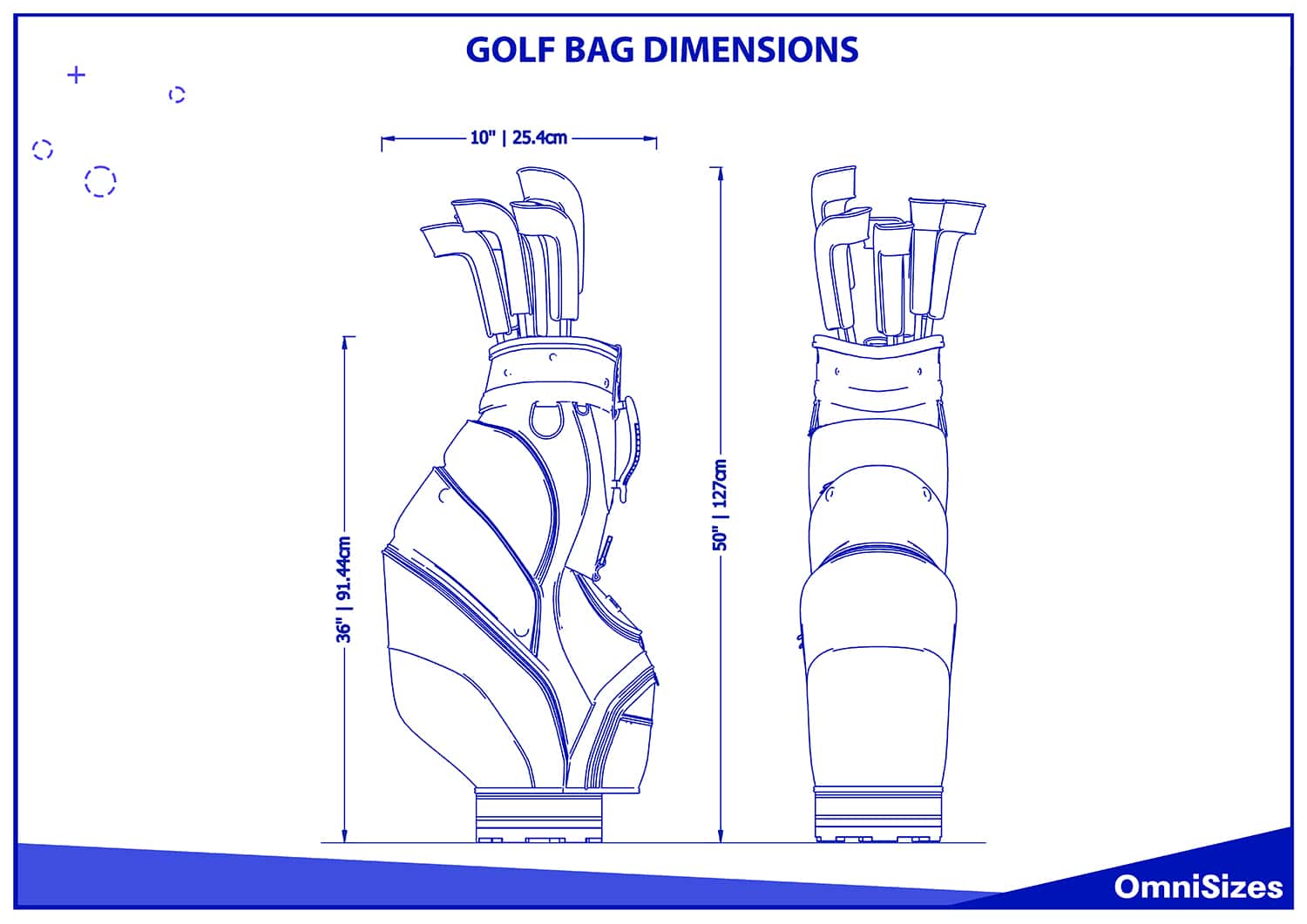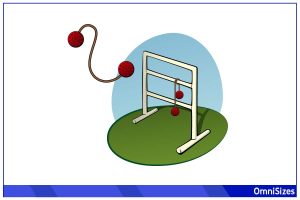Golf bag dimensions determine the comfort and functionality of the bag for golfers. The size and shape of these bags have evolved over time to accommodate the needs of both amateur and professional players.
The standard golf bag has an average height of about 36 inches (91.44 centimeters) without clubs. When clubs are added, the height can reach up to 50 inches (127 centimeters). The typical diameter is approximately 10 inches (25.4 centimeters).

This guide will go into greater detail regarding golf bag sizes, their significance, and the different types available to players.
Measurement Process for Golf Bags
Measuring golf bags involves looking at their dimensions, weight, and features. With different types of golf bags available in the market, their measurements are essential for golfers to choose one that aligns with their needs.
1. Key Dimensions
- Height: The height of a golf bag refers to its length from the base to the top. This height accommodates various lengths of golf clubs, from drivers to putters.
- Diameter: This dimension focuses on the bag’s width, offering space for golf clubs and ensuring they fit snugly without excessive movement.
2. Weight Considerations
Golf bags vary in weight depending on their type and the materials used. Generally speaking, larger bags can carry more clubs and other golfing equipment but weigh considerably more than their smaller counterparts. However, you may need multiple small bags to carry as many equipment as a single large-sized bag can.
3. Functional Features
Apart from dimensions and weight, other features impact the overall size and usability of the golf bag.
- Pockets: Golf bags come equipped with multiple pockets for various purposes – from storing golf balls and tees to refreshments and apparel. The number and size of these pockets can affect the bag’s overall dimensions.
- Strap Systems: Straps are designed for carrying the bag over the shoulder or for attachment to a cart. The type and number of straps can influence the bag’s weight and size.
- Dividers: Inside the bag, dividers help organize clubs, preventing them from tangling. The number of dividers varies, with some bags offering full-length dividers for every club.
Standard Size of a Golf Bag
If you’re looking for golf bags for your next round, you should get a feel for the typical bag sizes.
Average Dimensions
Golf bags generally stand tall at 36 inches without clubs. Once you insert your golf set, the height can go up to around 50 inches, depending on the length of the clubs.
A typical golf bag sports a diameter of 10 inches. This space is optimized to hold all your golf essentials without feeling too bulky.
Influence of Club Length
The length of your golf clubs plays a significant role in the final height of your packed golf bag. Drivers, being the longest clubs, can push the bag’s height close to the 50-inch mark, while putters and wedges have less impact.
Types of Golf Bags and Their Specifics
Golf bags can be tailored to fit various golfing styles and scenarios. Depending on various factors, you’ll need to choose the right golf bag for the right situation.
1. Tour Bags (Staff Bags)
Tour bags, also known as staff bags, are the most spacious bags available. They are often adorned with professional branding, making them a common choice among pro golfers.
- Size and Weight: Tour bags are the epitome of luxury in the golf bag world. These bags are on the larger end of the spectrum to accommodate numerous features and pockets. Their size facilitates easy storage of full club sets and additional gear.
- Features: Multiple dividers for club organization, numerous pockets for storage, and often crafted with premium materials for durability. Their design is also perfect for branding, often showcasing sponsor logos.
- Usage Scenario: Ideal for golfers who don’t mind the extra weight and seek maximum storage. Typically seen with professional players who have caddies to handle the bag.
2. Cart Bags
Cart bags are designed for use on a golf cart. They offer ample storage but are less bulky than tour bags.
- Size and Weight: Light and practical, stand bags average around 36 inches in height, without clubs. Their design allows golfers to quickly set them down and pick them up while moving around the course. They are slightly smaller than tour bags but are structured to fit perfectly on golf carts.
- Features: A rubber or non-slip base to keep the bag secure on a cart, multiple pockets, and club dividers. Some even have cooler pockets for refreshments.
- Usage Scenario: Perfect for golfers who primarily use carts and need convenient access to clubs and other essentials without the need to carry their bags long distances.
3. Carry Bags (Sunday Bags)
Carry bags, often called Sunday bags, are the lightest option. They are streamlined for essential items, making them perfect for a quick game or when using a limited set of clubs.
- Size and Weight: They are the lightest bags, typically weighing under 4 pounds.
- Features: Minimalistic design, often with a single strap and fewer pockets. Some may not have club dividers.
- Usage Scenario: Best for golfers heading out for short rounds, practice sessions, or when only a few clubs are needed.
4. Hybrid Bags
As the name suggests, hybrid bags merge the best features of stand and cart bags. They are designed for golfers who sometimes walk and sometimes ride.
- Size and Weight: They tend to weigh between 5 and 7 pounds, striking a balance between portability and storage.
- Features: Retractable legs like stand bags, with additional storage options often found in cart bags. They usually have a flat side for mounting on a cart.
- Usage Scenario: Versatile for golfers who switch between walking and riding. Offers flexibility without compromising on storage or convenience.
5. Travel Bags
Golfers who travel frequently for tournaments or leisure need bags that can protect their gear during transit. Travel bags are designed to do just that.
- Size and Weight: Varies depending on the design, but they are generally built to encompass other golf bags.
- Features: Padded interiors for club protection, sturdy exteriors to handle rough handling, and wheels for easy airport navigation.
- Usage Scenario: Essential for traveling golfers. They are used to encase other golf bags, providing an added layer of protection.






